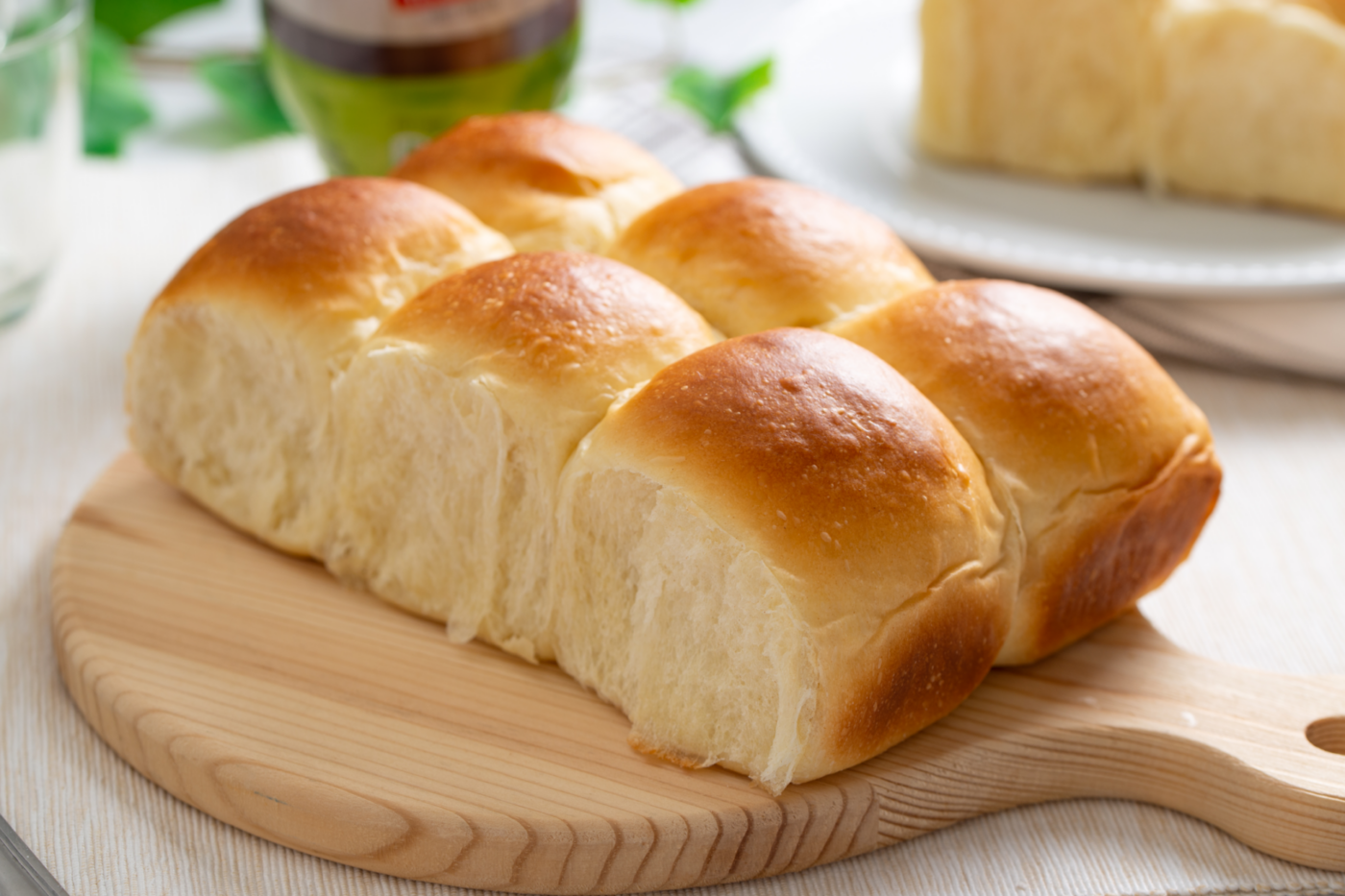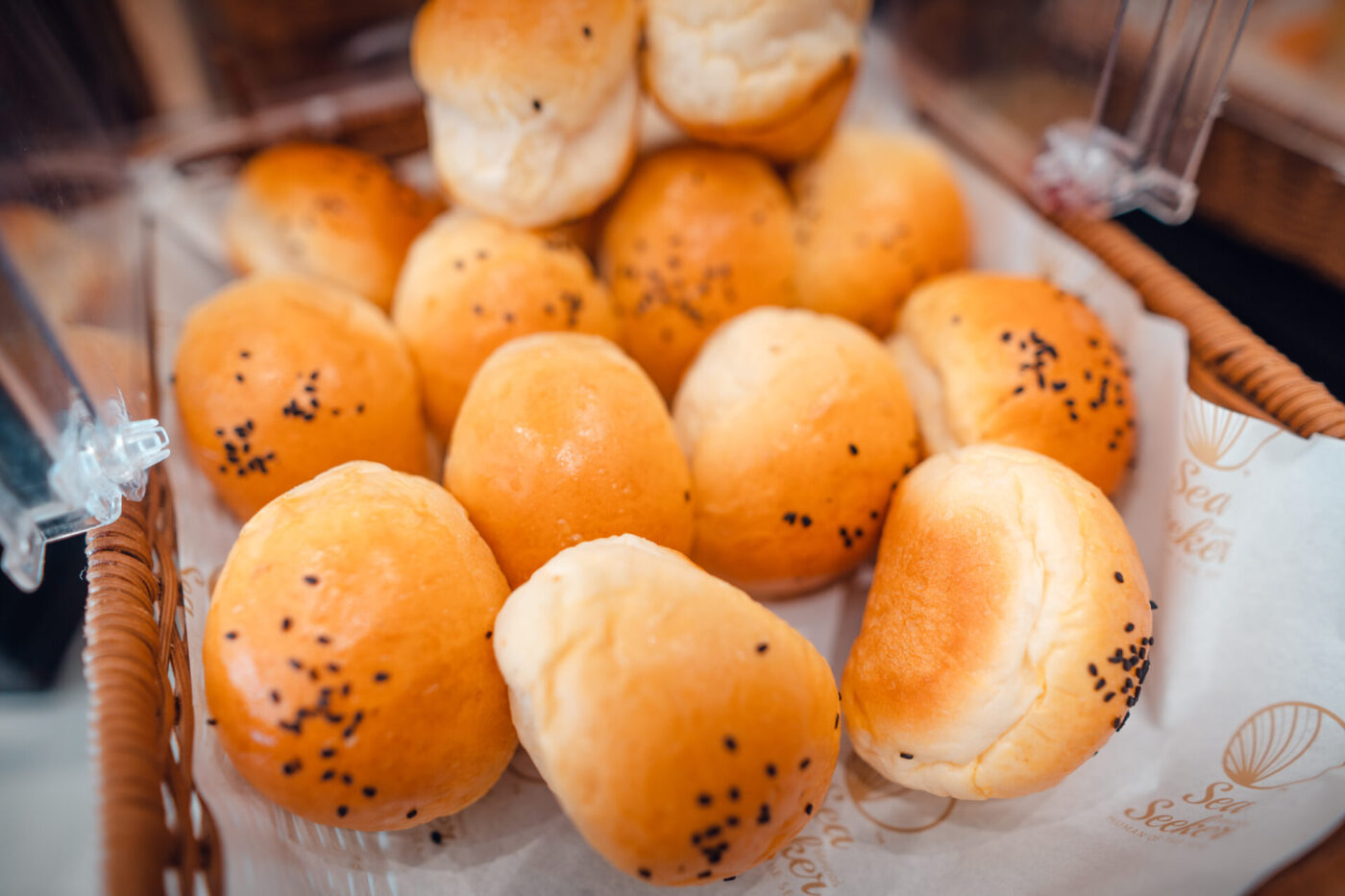Read More: History of Dinner Rolls
From Ancient Grains to Neolithic Ovens: The Earliest Bread Precursors
To truly understand the dinner roll, we must embark on a journey that takes us back to the very dawn of agriculture, some 10,000 years ago in the Fertile Crescent. Here, amidst the nascent fields of wheat and barley, humans first experimented with cultivating wild grains. The earliest forms of bread were likely unleavened flatbreads, far removed from the fluffy rolls we know today. These were made by grinding grains between stones, mixing the coarse flour with water, and cooking the resulting paste on heated rocks or within rudimentary ovens.
Archaeological evidence suggests that the Natufians, a Mesolithic culture in the Levant, were among the first to create a semblance of bread around 14,400 years ago. Charred remains of a flatbread-like food found at a Natufian site in Jordan predate the advent of agriculture, indicating that bread production may have even spurred the cultivation of cereals. These early breads were likely dense and chewy, a far cry from the soft, airy texture of a modern dinner roll, but they represented a monumental leap in human culinary development.
Ancient Egypt: Leavening and the Rise of Professional Bakers
The story of bread, and by extension, the dinner roll, takes a significant turn in Ancient Egypt. Here, around 4,000 years ago, the serendipitous discovery of leavening revolutionized baking. The Egyptians, renowned for their advancements in various fields, are credited with harnessing the power of wild yeasts to create lighter, more palatable bread.
One prevailing theory posits that a batch of dough left exposed to the air was colonized by airborne yeasts, causing it to ferment and rise. The resulting bread, with its novel texture and flavor, was undoubtedly a revelation. This accidental innovation marked the birth of leavened bread, the progenitor of the dinner rolls we cherish today.
In Egypt, bread was more than just food; it was a cornerstone of society, a form of currency, and even a religious offering. Large-scale bakeries emerged to supply the populace, and bakers achieved a respected status. Egyptian murals and tomb paintings depict a wide array of bread shapes and sizes, including small, round loaves that could be considered early ancestors of the dinner roll. These were likely enjoyed alongside meals, much like their modern counterparts.
Ancient Greece and Rome: Bread Becomes an Art Form
The knowledge of leavened bread spread from Egypt to the civilizations of Ancient Greece and Rome, where it continued to evolve. The Greeks, known for their philosophical and artistic pursuits, elevated bread making to an art form. They experimented with different grains, added herbs and spices, and even sweetened their bread with honey.
While the Greeks favored larger loaves, evidence suggests the existence of smaller bread forms used for specific purposes. These could have included breads for religious ceremonies, sacrificial offerings, or even as accompaniments to meals, hinting at the continuing evolution towards the distinct dinner roll.
The Romans, practical and organized as ever, further refined the art of baking. They established professional guilds of bakers, regulated the quality and price of bread, and developed more efficient milling techniques. The Roman military was fueled by bread, and portable, durable loaves were essential for long campaigns.
Roman bakers produced a variety of bread types, including “panis secundus,” a coarser bread made from bran, and “panis militaris,” the soldier’s bread. While large loaves were still the norm, smaller, individually portioned breads, such as “panis parvus,” gained popularity. These were frequently served at banquets and feasts, solidifying their role as a meal accompaniment and foreshadowing the ubiquitous presence of dinner rolls in later culinary traditions.
The Middle Ages: The Dark Ages for Bread (and Dinner Rolls)?
The fall of the Roman Empire ushered in a period of societal upheaval, often referred to as the Middle Ages. While this era wasn’t necessarily a “dark age” for bread itself, the advancements in baking technology and the variety of bread forms did plateau for a time.
In medieval Europe, bread remained a dietary staple, but the quality varied greatly depending on social class. The wealthy enjoyed white bread made from finely sifted flour, while the poor consumed darker, coarser bread made from rye, barley, or even oats. Large, round loaves were the most common form of bread, baked in communal ovens owned by the local lord or monastery.
While specific mentions of “dinner rolls” as we know them are scarce in medieval texts, the practice of using pieces of bread to sop up sauces and gravies, a key function of the modern dinner roll, was certainly prevalent. Thick slices of bread, known as “trenchers,” often served as edible plates, absorbing the juices from the meal. These trenchers, or smaller pieces broken off from larger loaves, were the medieval equivalent of the dinner roll, fulfilling a similar culinary role.
The Renaissance and Beyond: Refinement and the Emergence of the Dinner Roll
The Renaissance, a period of renewed interest in classical art, literature, and science, also witnessed a resurgence in culinary innovation. Baking techniques were refined, new ingredients were introduced, and the variety of bread expanded once more.
As dining practices became more elaborate, particularly among the aristocracy, the demand for smaller, more refined bread forms increased. French cuisine, with its emphasis on delicate flavors and elegant presentation, played a significant role in shaping the evolution of the dinner roll.
By the 17th and 18th centuries, smaller, individually sized breads, often enriched with butter, eggs, and sugar, started to appear on European tables, especially in France and Austria. These were the direct ancestors of the modern dinner roll. Viennese bakers, in particular, were renowned for their skill in creating a variety of small, delicate rolls, such as the “Kaisersemmel,” a crusty roll with a distinctive star-shaped pattern on top.
The Industrial Revolution and Mass Production
The Industrial Revolution of the 19th century brought about dramatic changes in food production, including the way bread was made. New technologies, such as roller mills and mechanical mixers, made it possible to produce bread on a massive scale.
The invention of commercial yeast, a more reliable and consistent leavening agent than wild yeasts, further revolutionized baking. This allowed for greater control over the fermentation process, resulting in more uniform and predictable bread production.
These advancements paved the way for the mass production of dinner rolls, making them readily available to a wider population. No longer a luxury reserved for the wealthy, dinner rolls became a common sight on dinner tables across the industrialized world.
The 20th Century and Beyond: The Dinner Roll in the Modern Era
The 20th century saw the dinner roll firmly established as a staple of Western cuisine. New variations emerged, from the soft, fluffy Parker House rolls of the United States to the crusty, sourdough rolls of San Francisco.
The rise of convenience foods in the mid-20th century led to the development of pre-packaged, ready-to-bake dinner rolls, further solidifying their place in the modern pantry. Today, dinner rolls come in countless shapes, sizes, and flavors, from whole wheat to garlic-herb to sweet Hawaiian rolls.
The Humble Dinner Roll: A Culinary Legacy
The dinner roll, often taken for granted, is a testament to the ingenuity and adaptability of human culinary traditions. From its humble beginnings as a coarse, unleavened flatbread in the ancient Near East to its current status as a ubiquitous table staple, the dinner roll has journeyed through millennia, reflecting and adapting to the changing tastes and technologies of each era.
So, the next time you reach for a dinner roll, take a moment to appreciate its rich history, a history that spans continents, cultures, and thousands of years. It’s a reminder that even the simplest of foods can carry within it a story as fascinating and complex as the world itself. And while its presence may be humble, its journey is anything but. The dinner roll stands as a tiny, delicious monument to human ingenuity, a crusty testament to our enduring relationship with bread, the staff of life.



Comments